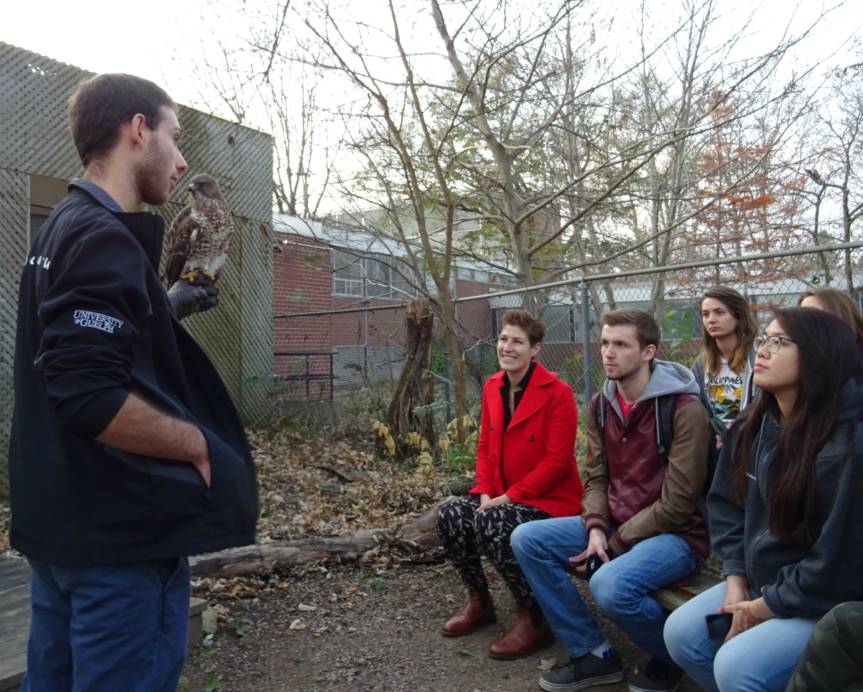On November 15, 2016, our Outdoor School had the amazing opportunity to visit Wild Ontario, where animal ambassadors greeted us with many different species of birds of prey. We were able to look at many species of birds including: Gyrfalcon (Falco rusticolus), American Kestrel (Falco sparverius), Great Horned Owl (Bubo virginianus), Eastern Screech-Owl (Megascops asio), Turkey Vulture (Cathartes aura), and Broad-winged Hawk (Buteo platypterus). Some of these birds were human imprints, meaning someone illegally took the bird from the wild, thinking they would make a great pet, but they later released them back into the wild even though the bird had become accustomed to being nourished and cared for by humans. Other birds were actually injured like the hawk that was hit by a car and is resting after rehabilitation. This of course is the reason why Wild Ontario exists- in order to give these birds a home and make sure they can live the rest of their lives happily and safely here in Guelph.
Along with seeing the live birds, we were able to touch and feel different parts of birds, such as severed feet, which came in many different sizes, as well as wings that were full of soft and multi-coloured feathers. The reading given last week was great for connecting us to these birds of prey at Wild Ontario. Although they seemed tame and relaxed, their piercing eyes still gave me a bit of uneasiness as these are still wild predators that naturally could kill large species of animals like deer, and as Diane said, they had the look of MURDER. And again, with this Outdoor School trip that took us to see live birds that were much bigger than the tiny chickadees in our last excursion, I’ve found a new appreciation for avian rehabilitation and general studies on species of prey, so again I am becoming very open to expanding my knowledge on a different group of animals.



































You must be logged in to post a comment.